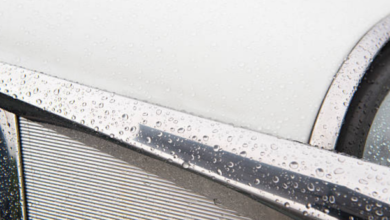Dry Rotted Tires: What You Need to Know

Dry rotted tires are a common problem for many vehicle owners, especially those who don’t use their vehicles frequently. Tire dry rot, also known as sidewall cracking, can compromise the safety and performance of your car. Understanding what causes dry rotted tires and how to prevent them can save you from potential hazards on the road.
What Are Dry Rotted Tires?
Dry rotted tires occur when the rubber of the tire begins to break down and deteriorate. This process causes small cracks to form on the surface and sidewalls of the tire. Over time, these cracks can expand, leading to reduced tire flexibility, strength, and eventually, complete tire failure.
Causes of Dry Rotted Tires
There are several factors that contribute to the dry rotting of tires:
- Age: Tires naturally degrade over time, and as they age, they become more prone to dry rot. Even if a tire looks fine on the outside, it can still be affected by dry rot as the rubber compounds break down.
- Exposure to Sunlight: UV rays from the sun are one of the main culprits behind dry rotted tires. Prolonged exposure to sunlight accelerates the breakdown of the rubber, causing it to lose its elasticity.
- Heat: High temperatures can also lead to dry rot by causing the oils in the rubber to evaporate, making the tire more susceptible to cracking.
- Lack of Use: When a vehicle remains stationary for long periods, its tires are more likely to dry out and develop cracks. Regular use helps keep the tires’ rubber flexible and in better condition.
- Poor Storage Conditions: Storing your car or tires in a location with fluctuating temperatures, high humidity, or direct sunlight can also increase the chances of developing dry rotted tires.
Signs of Dry Rotted Tires
Identifying dry rotted tires early can help prevent potential accidents and costly repairs. Here are some signs to look for:
- Cracks on the Sidewalls: Small, visible cracks on the sidewalls of the tire are a clear indicator of dry rot.
- Faded or Discolored Rubber: Tires that appear grayer or more faded than usual may be starting to dry out.
- Brittleness: If the tire feels unusually hard or brittle, it’s a sign that the rubber is losing its flexibility.
- Blisters or Bulges: In advanced stages of dry rot, you may notice blisters or bulges on the tire’s surface.
How to Prevent Dry Rotted Tires
Preventing dry rotted tires is much easier than dealing with the consequences of a tire failure. Here are some tips to help you keep your tires in good condition:
- Regular Inspections: Check your tires regularly for signs of cracking or wear, especially if your vehicle is parked for long periods.
- Proper Storage: Store your vehicle or spare tires in a cool, dry place away from direct sunlight. Consider using tire covers if you have to park outside.
- Drive Regularly: Regular driving helps keep the rubber flexible and prevents it from drying out. Even a short drive every few weeks can make a big difference.
- Tire Maintenance: Keep your tires properly inflated and rotate them regularly to ensure even wear. This will help prolong their lifespan and reduce the risk of dry rot.
- Use Tire Protectants: There are specific tire products designed to protect rubber from UV damage and oxidation. Using a tire protectant can help prevent the onset of dry rot.
When to Replace Dry Rotted Tires
If you notice any signs of dry rot on your tires, it’s best to consult a tire professional to assess the damage. In most cases, these tires cannot be repaired and must be replaced to ensure safe driving. Driving on dry rotted tires is dangerous as they can blow out at any moment, leading to potential accidents.
Conclusion
Dry rotted tires are a serious issue that every vehicle owner should be aware of. By understanding the causes, recognizing the signs, and taking preventive measures, you can extend the life of your tires and drive safely. Regular tire maintenance and proper storage practices are key to avoiding dry rot and ensuring your vehicle remains roadworthy.




